(under construction) no I can't rotate my pictures. aahhh! dag blasted

My husband and I live on two sand pine acres south of Holt, Florida. This is in the panhandle close to Alabama. The property was virgin, native and we have tried to keep it that way. I brought some of my favorite shrubs and perennials with me and bought a few too. And, we put odd patches of sod in the back yard for the dogs. The weather is kooky- hot and humid in summer and alernatingly chilly, short freezing periods and warm in the winter. This wreaks havoc with our fruit trees and veggies not to mention the poor birds.
We keep chickens for all of their useful qualities - eggs, fertilizing and tilling the ground, pest control, garbage disposal and occasional meat. We sell enough eggs to pay for the feed. And, the good wholesome activity keeps us off the couch.

We have had several different breeds of standard chickens over the years, egg-layers and dual purpose leaning more toward egg production. Currently we are keeping more Buff Orpington, Welsumer, Easter Egger/Ameracauna. We have kept some of our favorite birds from past years, of different breeds, even if they dont lay well now. We like a calm well-adjusted flock. Those birds who don't play well with others have been delicious. We have sold birds as well. Some breeds have been more decorative, producing few or smaller eggs or were just plain cliquey and not good flock birds. Hens we have kept from previous flocks are a red Cornish (Priscilla), several Easter Egger and Ameracauna (3 wheaten, a very hefty EE, 2 wild light birds, all great layers), a kooky silver laced Wyandotte, a white Rock and some Buff Orps. Currently, we have 30 regular layers and 10 keepers who occasionally lay. We have 5 roosters in their own pens that will be used for breeding.
We have enjoyed breeding on a small scale. We are convinced that the chicks we raise from eggs have been better birds. We select for size and egg laying ability primarily. And, because our breeding stock is kept on good behavior as well, the resulting offspring so far have really nice behaviors. We have hatched out Silkies, Easter Egger and crosses. In the next year we plan on breeding our new Easter Egger rooster with 2 Wheaten EE hens, Welsumer rooster with 2 of our larger Welsumer hens and our older hefty red Cornish with a 1 year old dark cornish.

We crossed two of our larger Buff Orpinton ladies with our large and excellent Easter Egger rooster, Stumpy, and got two types of chicks, a bird that looked like a New Hampshire and another that looked like a Delaware. These offspring were used as meat birds. The Delaware like birds grew at an amazing rate nearly twice that of the New Hampshire like birds.
Some birds are just plain different. We don't name our birds usually, but, some of our birds qualify. We had a bird named Blondie, an EE hen, who had a dog-like personality. She followed us and came when called, loved to be held, etc.,. She nearly lost her head getting stuck in the wire when young, she lost all her feathers during a late molt in extremely cold weather, got in house special treatment and later she thought herself at the top of pecking order and we needed to seperate her. As she got older she was able to go in with the rest of the flock. She lost her unique personality but layed a jumbo egg for a couple of years until she became egg bound and died at 6 years old. As she was failing, a lovely white Ameracauna pullet develped a unique personality. We are convinced that Blondie's spirit was reborn into this bird who we have named Snowball.

Some birds are good layers or have qualities that are so good I try to overlook a mean temperment. I usually try a time out or isolation phase, throw the bird in with a rooster, things like that, unless the bird is a rooster of course. One bird we named Stepford, looked a little like Blondie and harrased her no end. She was just plain evil but lays beautiful eggs. When Blondie began to fail she became a different bird. I still don't trust her, expecting the worst one day but she is oddly changed to a good flock bird. Priscilla, an old red Cornish hen has been an amazingly good bird since she was a chick. She doesn't lay often but is one of those once in a lifetime good birds. I am going to try and breed her this year (2012) with a dark Cornish. She was at the top of the pecking order for many years and kept peace in the flock. Now she, the older or odd birds have developed a roosting relationship. She often accepts a unique bird into the group and protects them until they get established. All of the other birds respect her and I doubt that when she passes on we will see one like her.

Our attempt at ducks was short lived. We keep two Pekin duck hens that are great layers and have great personalities. We just don't have the time or patience to deal with the mess.


We have had some bad predator experiences mostly from being comfortable and complacent. The worst was from neighborhood dogs (there are some people who will not keep their dogs fenced in) who got into our layer run and house. It was obvious that their owner let them out too. We lost 11 birds and had some major medical issues to deal with. It is good to have a basic knowledge of first aid and sewing for livestock. Modifications to the entire perimeter were done soon after and that solved dog problems. We keep live traps inside and out for other visitors, rat bait and traps in the feed shed. Snakes have taken their share of chicks and eggs, usually after coming out of hibernation. We solved the chick losses by hardware meshing in the brooding structures and silkie coup, even deep under the run. allowing for a reasonable rat population and collecting eggs often in the spring has limited the egg eating. My husband has caught and taken repeat offenders far from our property. All creatures caught in the live traps are relocated or shot if they are ill.
During researching and preparation for our first flock I learned about ACV (apple cider vinegar) and Oxine AH. I use these more often than any other additives. We have had few experiences with disease and illness. Yes, some birds have died, young and old for no apparent reason, but not many. I have used antibiotics only in the most dire cases along with herbal preparations (these are my first choice) that I make.
We have built our poultry structures mainly out of free found materials and give aways. Wire and mesh has been the biggest expense. We took apart an old dog kennel one year for the wood wire and metal which was quite an experience. For the main house, I found a good publication through the U of California ag extenion, plans for an open house which I modified and my husband and son built, sort of. It ended up being taller which works out well. The main house and run are for layers. There are 4 pens along two sides of the main run for rooster breeding pens and other uses. A silkie coop is inside the main run as well but the silkie rooster is the only primary resident. My husband keeps doing modifications and rebuilds as well as maintenance tear downs. I love everything about my poultry area but would love to make it a Fort Knox of structures with all kinds of automated features.
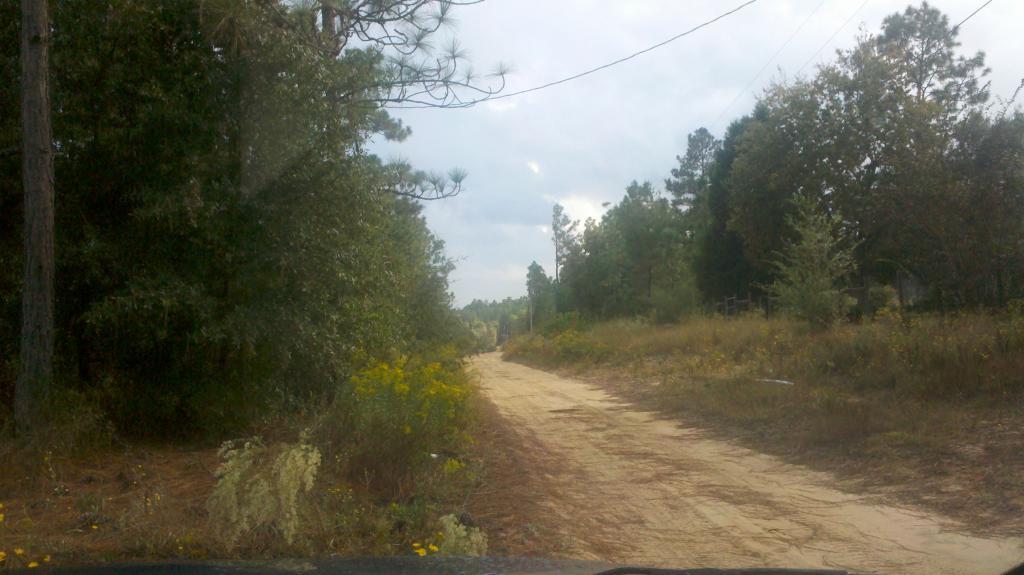
My husband and I live on two sand pine acres south of Holt, Florida. This is in the panhandle close to Alabama. The property was virgin, native and we have tried to keep it that way. I brought some of my favorite shrubs and perennials with me and bought a few too. And, we put odd patches of sod in the back yard for the dogs. The weather is kooky- hot and humid in summer and alernatingly chilly, short freezing periods and warm in the winter. This wreaks havoc with our fruit trees and veggies not to mention the poor birds.
We keep chickens for all of their useful qualities - eggs, fertilizing and tilling the ground, pest control, garbage disposal and occasional meat. We sell enough eggs to pay for the feed. And, the good wholesome activity keeps us off the couch.
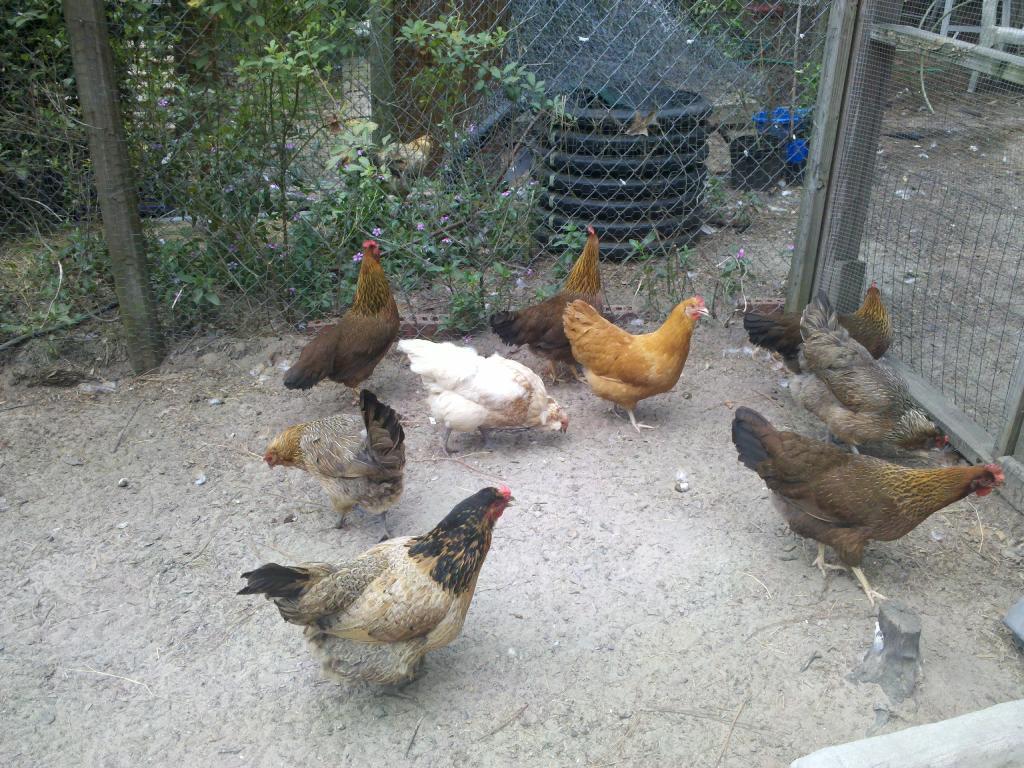
We have had several different breeds of standard chickens over the years, egg-layers and dual purpose leaning more toward egg production. Currently we are keeping more Buff Orpington, Welsumer, Easter Egger/Ameracauna. We have kept some of our favorite birds from past years, of different breeds, even if they dont lay well now. We like a calm well-adjusted flock. Those birds who don't play well with others have been delicious. We have sold birds as well. Some breeds have been more decorative, producing few or smaller eggs or were just plain cliquey and not good flock birds. Hens we have kept from previous flocks are a red Cornish (Priscilla), several Easter Egger and Ameracauna (3 wheaten, a very hefty EE, 2 wild light birds, all great layers), a kooky silver laced Wyandotte, a white Rock and some Buff Orps. Currently, we have 30 regular layers and 10 keepers who occasionally lay. We have 5 roosters in their own pens that will be used for breeding.
We have enjoyed breeding on a small scale. We are convinced that the chicks we raise from eggs have been better birds. We select for size and egg laying ability primarily. And, because our breeding stock is kept on good behavior as well, the resulting offspring so far have really nice behaviors. We have hatched out Silkies, Easter Egger and crosses. In the next year we plan on breeding our new Easter Egger rooster with 2 Wheaten EE hens, Welsumer rooster with 2 of our larger Welsumer hens and our older hefty red Cornish with a 1 year old dark cornish.
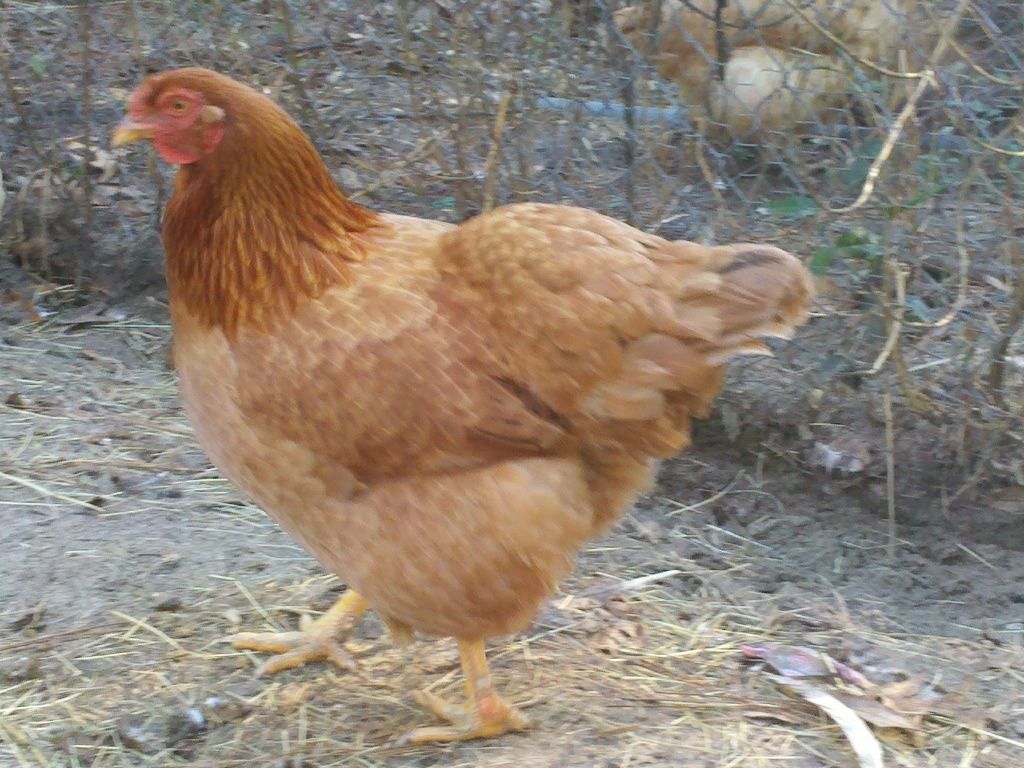
We crossed two of our larger Buff Orpinton ladies with our large and excellent Easter Egger rooster, Stumpy, and got two types of chicks, a bird that looked like a New Hampshire and another that looked like a Delaware. These offspring were used as meat birds. The Delaware like birds grew at an amazing rate nearly twice that of the New Hampshire like birds.
Some birds are just plain different. We don't name our birds usually, but, some of our birds qualify. We had a bird named Blondie, an EE hen, who had a dog-like personality. She followed us and came when called, loved to be held, etc.,. She nearly lost her head getting stuck in the wire when young, she lost all her feathers during a late molt in extremely cold weather, got in house special treatment and later she thought herself at the top of pecking order and we needed to seperate her. As she got older she was able to go in with the rest of the flock. She lost her unique personality but layed a jumbo egg for a couple of years until she became egg bound and died at 6 years old. As she was failing, a lovely white Ameracauna pullet develped a unique personality. We are convinced that Blondie's spirit was reborn into this bird who we have named Snowball.
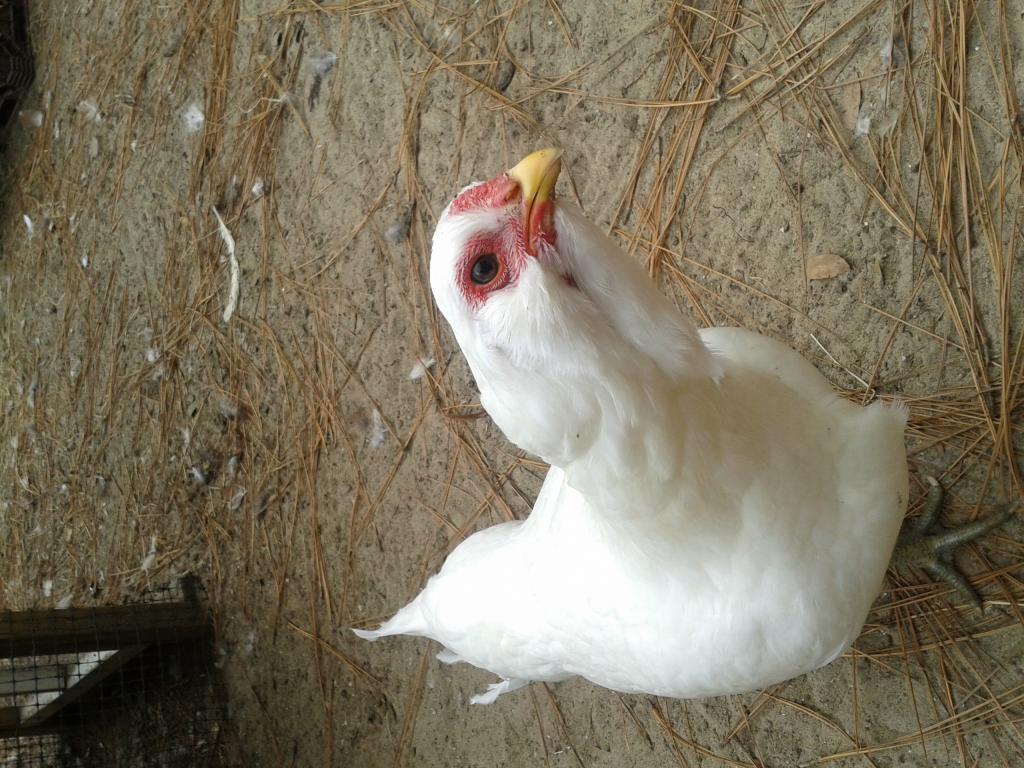
Some birds are good layers or have qualities that are so good I try to overlook a mean temperment. I usually try a time out or isolation phase, throw the bird in with a rooster, things like that, unless the bird is a rooster of course. One bird we named Stepford, looked a little like Blondie and harrased her no end. She was just plain evil but lays beautiful eggs. When Blondie began to fail she became a different bird. I still don't trust her, expecting the worst one day but she is oddly changed to a good flock bird. Priscilla, an old red Cornish hen has been an amazingly good bird since she was a chick. She doesn't lay often but is one of those once in a lifetime good birds. I am going to try and breed her this year (2012) with a dark Cornish. She was at the top of the pecking order for many years and kept peace in the flock. Now she, the older or odd birds have developed a roosting relationship. She often accepts a unique bird into the group and protects them until they get established. All of the other birds respect her and I doubt that when she passes on we will see one like her.
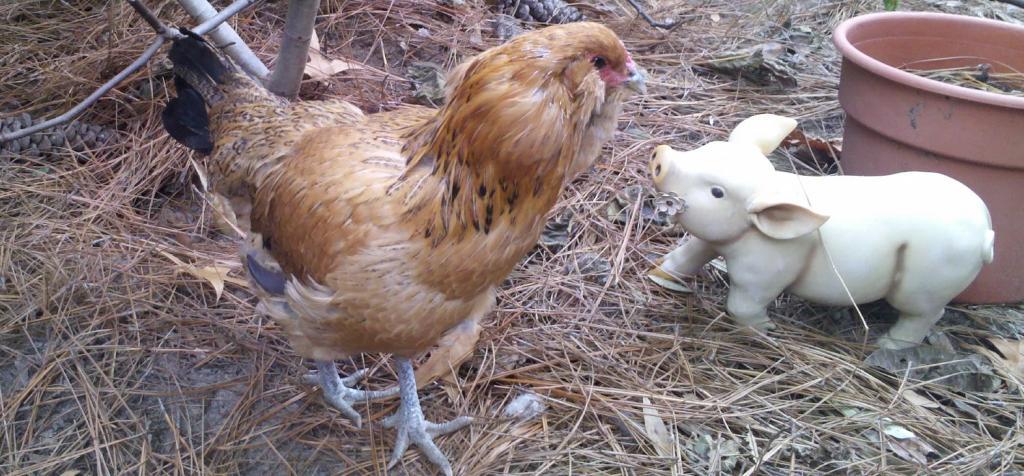
Our attempt at ducks was short lived. We keep two Pekin duck hens that are great layers and have great personalities. We just don't have the time or patience to deal with the mess.
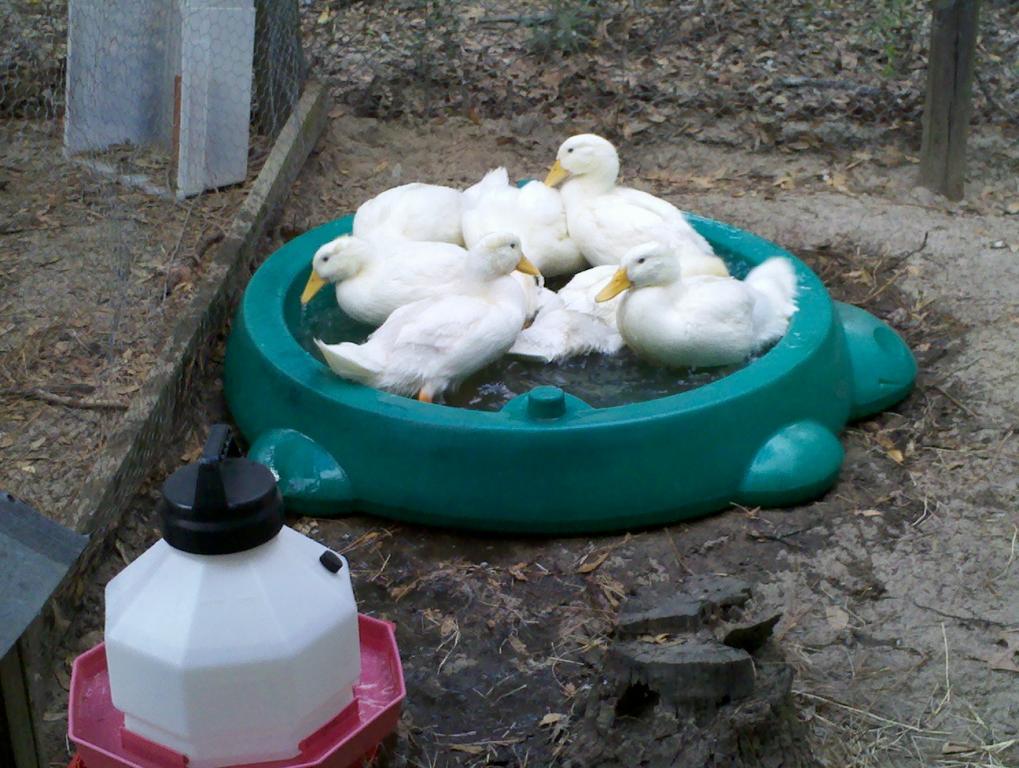
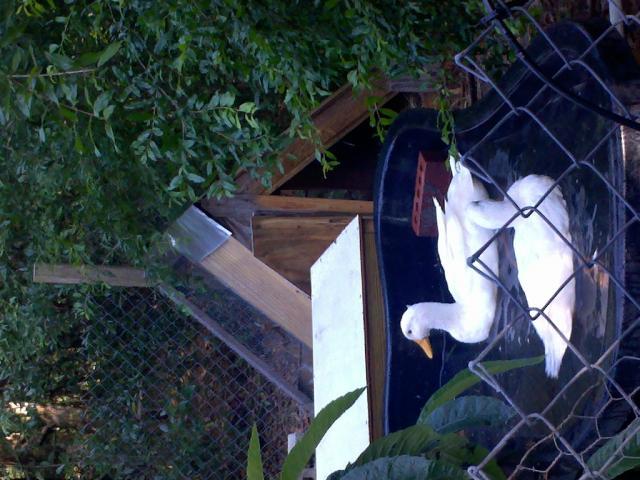
We have had some bad predator experiences mostly from being comfortable and complacent. The worst was from neighborhood dogs (there are some people who will not keep their dogs fenced in) who got into our layer run and house. It was obvious that their owner let them out too. We lost 11 birds and had some major medical issues to deal with. It is good to have a basic knowledge of first aid and sewing for livestock. Modifications to the entire perimeter were done soon after and that solved dog problems. We keep live traps inside and out for other visitors, rat bait and traps in the feed shed. Snakes have taken their share of chicks and eggs, usually after coming out of hibernation. We solved the chick losses by hardware meshing in the brooding structures and silkie coup, even deep under the run. allowing for a reasonable rat population and collecting eggs often in the spring has limited the egg eating. My husband has caught and taken repeat offenders far from our property. All creatures caught in the live traps are relocated or shot if they are ill.
During researching and preparation for our first flock I learned about ACV (apple cider vinegar) and Oxine AH. I use these more often than any other additives. We have had few experiences with disease and illness. Yes, some birds have died, young and old for no apparent reason, but not many. I have used antibiotics only in the most dire cases along with herbal preparations (these are my first choice) that I make.
We have built our poultry structures mainly out of free found materials and give aways. Wire and mesh has been the biggest expense. We took apart an old dog kennel one year for the wood wire and metal which was quite an experience. For the main house, I found a good publication through the U of California ag extenion, plans for an open house which I modified and my husband and son built, sort of. It ended up being taller which works out well. The main house and run are for layers. There are 4 pens along two sides of the main run for rooster breeding pens and other uses. A silkie coop is inside the main run as well but the silkie rooster is the only primary resident. My husband keeps doing modifications and rebuilds as well as maintenance tear downs. I love everything about my poultry area but would love to make it a Fort Knox of structures with all kinds of automated features.
